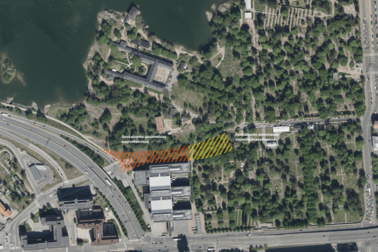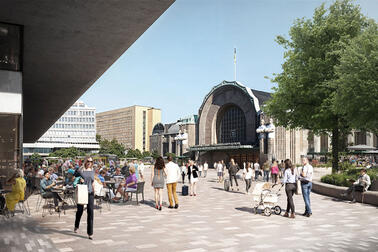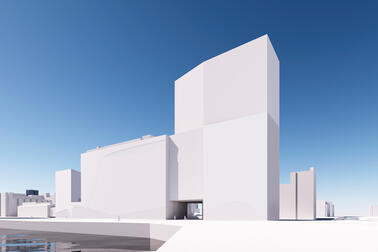
The Port of Helsinki's tunnel project will allow the passenger car ferry traffic to Tallinn to be concentrated at the West Harbour and lorry traffic to and from the harbour to be moved away from the streets. With these new port traffic arrangements, the City of Helsinki will be able to develop the South Harbour into an area that better serves the city's residents.
Option A was found to be the most advantageous for the City overall. Factors that especially supported it were its timetable, costs and feasibility.
“The different route options of the harbour tunnel were thoroughly examined, and in the end we concluded that using option A as the basis of detailed planning was the best solution in terms of meeting Helsinki’s land use objectives in the near future. This option provides the preconditions for taking into account energy production needs and opportunities to carry out significant urban development in the South Harbour. That being said, the option does come with its own set of challenges, in relation to which we must strive to minimize the environmental impacts of the project and preserve the living conditions of endangered species in the Lapinlahti area,” states Land Use Director Rikhard Manninen from the City of Helsinki Urban Environment Division.
“I am pleased that the route option was so thoroughly discussed in good cooperation with the City of Helsinki. Once the tunnel and the new terminal are completed, we will move Tallinn traffic from Katajanokka to Jätkäsaari. The Port will not be the only one to benefit from the tunnel's construction, as it will enhance Jätkäsaari's attractiveness and traffic safety in the area. Furthermore, the benefits of the tunnel will extend more widely to southern Helsinki's traffic, as centralising the ferry traffic will reduce port-related car traffic in central Helsinki by as much as 75 per cent compared to the current situation,” says Ville Haapasaari, CEO of the Port of Helsinki.
Solutions found in tunnel design to mitigate environmental impact on Lapinlahti
An assessment of the environmental impact is an integral part of the tunnel planning process. The main issues to be resolved in the tunnel option selected for further planning are connected to Lapinlahti park's natural, scenic and cultural-historical values. The planning has already significantly mitigated the impacts, and the work continues. For example, the tunnel route is located in a core Siberian flying squirrel habitat, but the trees there can be preserved. Moreover, specific construction techniques can also protect the high-quality turnip-rooted chervil vegetation in Lapinlahti park, which provides a habitat for the endangered depressaria chaerophylli moths. Additionally, the turnip-rooted chervil and depressaria chaerophylli habitat in Lapinlahti park will be improved through extensive transplanting. The Port also aims to minimise tree felling.
Harbour tunnel to enable implementation of the Port of Helsinki's development programme
The harbour tunnel is part of the Port of Helsinki's development programme, which is progressing step by step in accordance with the principle decision made by the City Council in 2021. The development programme will ensure the Port's ability to carry out modern port operations and serve the passengers and freight traffic increasingly well. The City of Helsinki aims to make the South Harbour area more attractive by enabling the construction of an architecture and design museum, for example.
The next step in the tunnel project is the detailed planning process. The tunnel’s local detailed plan will be processed by the City of Helsinki Urban Environment Committee in late 2024 and decided on by the City Council in autumn 2025. The Port of Helsinki’s aim is to obtain a building permit for the tunnel in 2028.
Once completed, the harbour tunnel will allow Tallinn traffic to be concentrated in the West Harbour around the early years of the 2030s.


